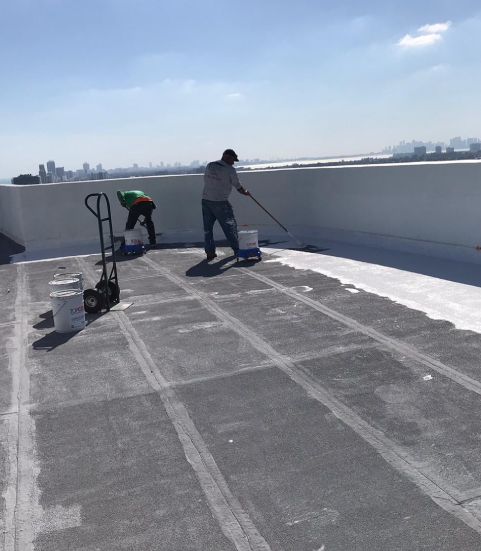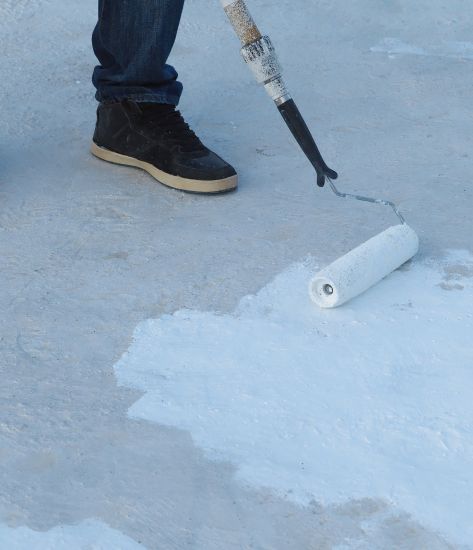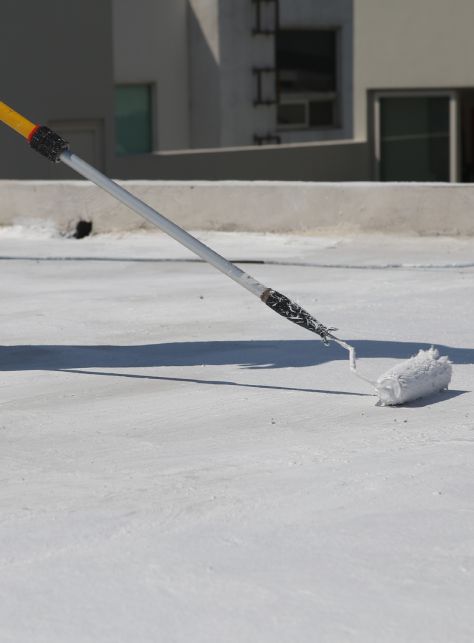Fluid Applied Roofing
Fluid Applied Roofing Systems
Fluid-applied roofing systems are becoming a more popular alternative to re-roofing flat roofs in the Miami and Fort Lauderdale areas. Fluid applied roof systems offer similar or better warranties to entire reroof projects at a better cost. In most cases, tearing off of the old roof is not necessary to install a fluid applied system and the new system can be directly installed to the old roof- saving in labor costs.
Liquid Applied Roofing System Pros & Cons

Installing Fluid Applied Roofing Systems
In order to install a fluid-applied roofing system over a concrete surface, the moisture within the existing roof must be under a designated amount (the amount varies for different products). To install a fluid-applied roofing system over a wood deck, bad wood must be replaced and repairs made in order to give the new fluid-applied system a good support deck.
Benefits of Fluid Applied Roofing Systems
Benefits to installing fluid-applied systems include the ability to install paver or tiled decks atop certain approved fluid-applied systems, the ability to install green roofs or planters atop certain approved systems and a greater reflectivity value than built-up flat roofs or tar and gravel roofs – decreasing utility costs.


Different Types of Fluid-Applied Systems
- Acrylic Roof Systems- These water based fluid-applied systems are cost-effective and work great for roofs that are pitched correctly and don’t have any issues with ponding water. If roofs are going to handle foot traffic or paver weight, then acrylic is not the answer.
- Polyurethane Roof Systems- Polyurethane systems are the strongest of the fluid-applied systems and are built to withstand regular foot traffic or install of paver decks. However, they are also the most expensive of the fluid-applied roofing systems.
- Silicone Roof Systems – Silicone systems are more durable than acrylic roof systems and can withstand ponding water situations better than acrylics. The drawback is silicone can only adhere to silicone, limiting future restoration options.

